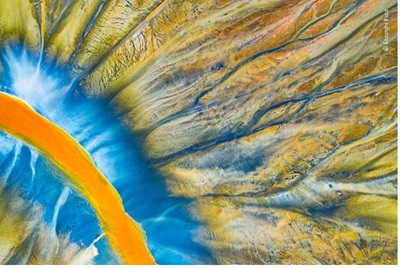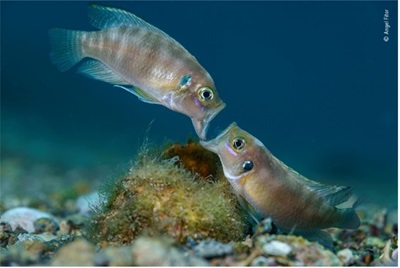The world-renowned exhibition, on loan from the Natural History Museum in London, will open at the Australian National Maritime Museum on April 8. The collection reveals a spectacular array of plant and animal species and a breathtakingly diverse view of the natural world.
The arresting power of the photographic medium shines a light on places, plants and creatures from around the world, inspiring audiences and fostering connections toward a future of advocating for the planet.
Wildlife Photographer of the Year is the most prestigious photography event of its kind, providing a global platform that showcases the natural world’s most astonishing and challenging sights. Launched in 1965 with an initial 365 entrants, today the competition draws over 50,000 entries from all over the world. This year’s award-winning images are shown to more than a million people, on its international tour.
Judges of the 57th Wildlife Photographer of the Year had the challenging task of reviewing a record-breaking number of entries from 95 countries. Each entry is anonymously assessed by an international panel of industry experts, applying complex criteria - including creativity, originality, and technical excellence.
Tanya Bush, Interim Director of the Australian National Maritime Museum, says, 'The museum is thrilled, once again, to host this extraordinary exhibition. Part of the joy of these images is the microcosmic perspective they give, into an astonishing and beautiful natural world.
‘When we are brought so close to these creatures and plants, we are reminded of both the diversity and vulnerability of life on Earth. These photographers have each captured something wonderful and powerful; it is up to each of us as to how we are moved to respond.’
The Wildlife Photographer of the Year is developed and produced by the Natural History Museum, London. The exhibition opens at the Australian National Maritime Museum from April 8.
ENDS

Toxic design by Gheorghe Popa, Romania
Highly commended, Natural Artistry,
Wildlife Photographer of the Year

Face-off, from Cichlids of Planet Tanganyika by Angel Fitor, Spain
Winner, Portfolio Award, Wildlife Photographer of the Year
Hashtag: #WPY57
The Natural History Museum is both a world-leading science research centre and the most-visited indoor attraction in the UK last year. With a vision of a future in which both people and the planet thrive, it is uniquely positioned to be a powerful champion for balancing humanity’s needs with those of the natural world. It is custodian of one of the world’s most important scientific collections comprising over 80 million specimens. The scale of this collection enables researchers from all over the world to document how species have and continue to respond to environmental changes - which is vital in helping predict what might happen in the future and informing future policies and plans to help the planet.
The Museum’s 300 scientists continue to represent one of the largest groups in the world studying and enabling research into every aspect of the natural world. Their science is contributing critical data to help the global fight to save the future of the planet from the major threats of climate change and biodiversity loss through to finding solutions such as the sustainable extraction of natural resources. The Museum uses its enormous global reach and influence to meet its mission to create advocates for the planet - to inform, inspire and empower everyone to make a difference for nature. We welcome millions of visitors each year; our digital output reaches hundreds of thousands of people in over 200 countries each month and our touring exhibitions have been seen by around 30 million people in the last 10 years.